Edward Guo
Large-scale Hybrid Approach for Predicting User Satisfaction with Conversational Agents
May 29, 2020
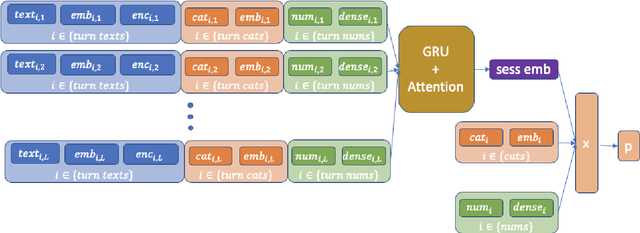
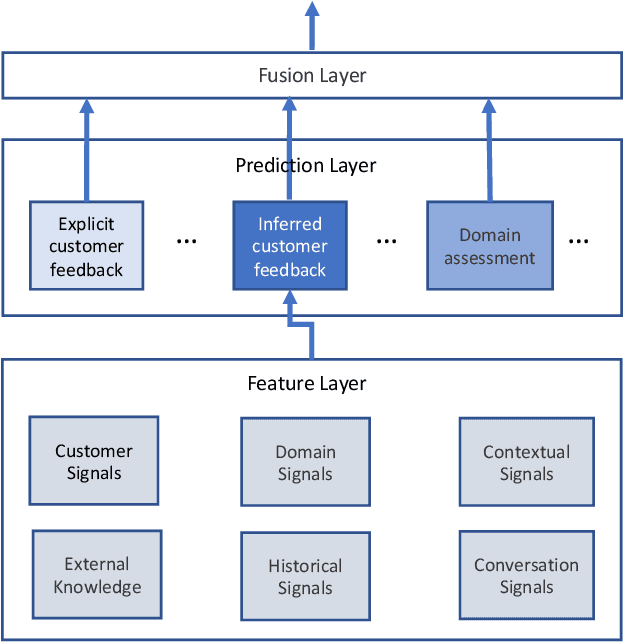
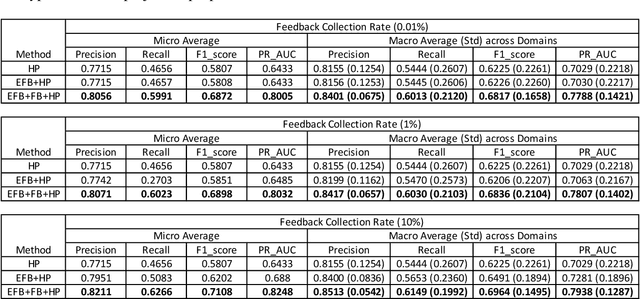
Abstract:Measuring user satisfaction level is a challenging task, and a critical component in developing large-scale conversational agent systems serving the needs of real users. An widely used approach to tackle this is to collect human annotation data and use them for evaluation or modeling. Human annotation based approaches are easier to control, but hard to scale. A novel alternative approach is to collect user's direct feedback via a feedback elicitation system embedded to the conversational agent system, and use the collected user feedback to train a machine-learned model for generalization. User feedback is the best proxy for user satisfaction, but is not available for some ineligible intents and certain situations. Thus, these two types of approaches are complementary to each other. In this work, we tackle the user satisfaction assessment problem with a hybrid approach that fuses explicit user feedback, user satisfaction predictions inferred by two machine-learned models, one trained on user feedback data and the other human annotation data. The hybrid approach is based on a waterfall policy, and the experimental results with Amazon Alexa's large-scale datasets show significant improvements in inferring user satisfaction. A detailed hybrid architecture, an in-depth analysis on user feedback data, and an algorithm that generates data sets to properly simulate the live traffic are presented in this paper.
Knowledge Distillation from Internal Representations
Oct 08, 2019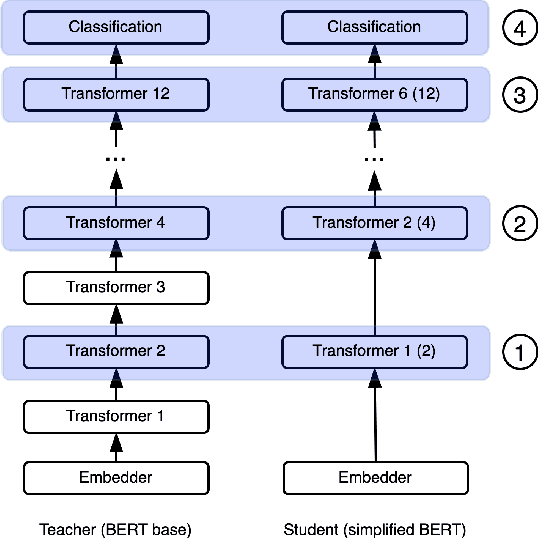
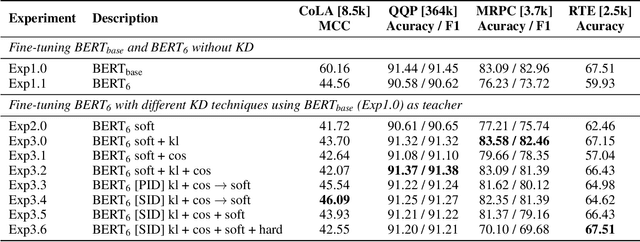
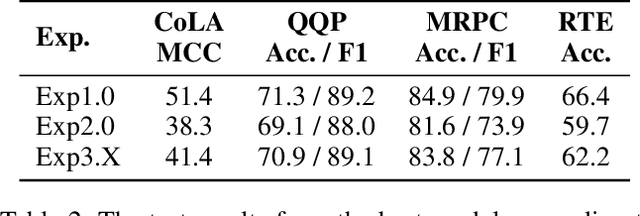
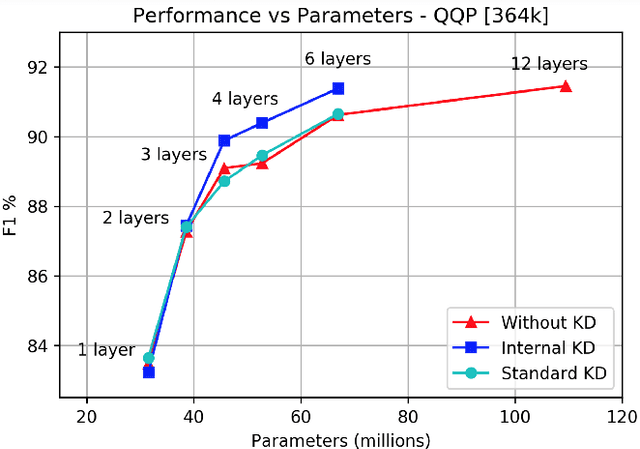
Abstract:Knowledge distillation is typically conducted by training a small model (the student) to mimic a large and cumbersome model (the teacher). The idea is to compress the knowledge from the teacher by using its output probabilities as soft-labels to optimize the student. However, when the teacher is considerably large, there is no guarantee that the internal knowledge of the teacher will be transferred into the student; even if the student closely matches the soft-labels, its internal representations may be considerably different. This internal mismatch can undermine the generalization capabilities originally intended to be transferred from the teacher to the student. In this paper, we propose to distill the internal representations of a large model such as BERT into a simplified version of it. We formulate two ways to distill such representations and various algorithms to conduct the distillation. We experiment with datasets from the GLUE benchmark and consistently show that adding knowledge distillation from internal representations is a more powerful method than only using soft-label distillation.
 Add to Chrome
Add to Chrome Add to Firefox
Add to Firefox Add to Edge
Add to Edge